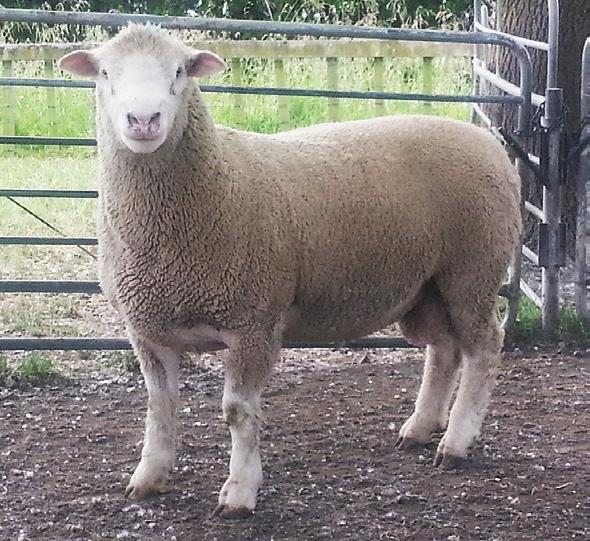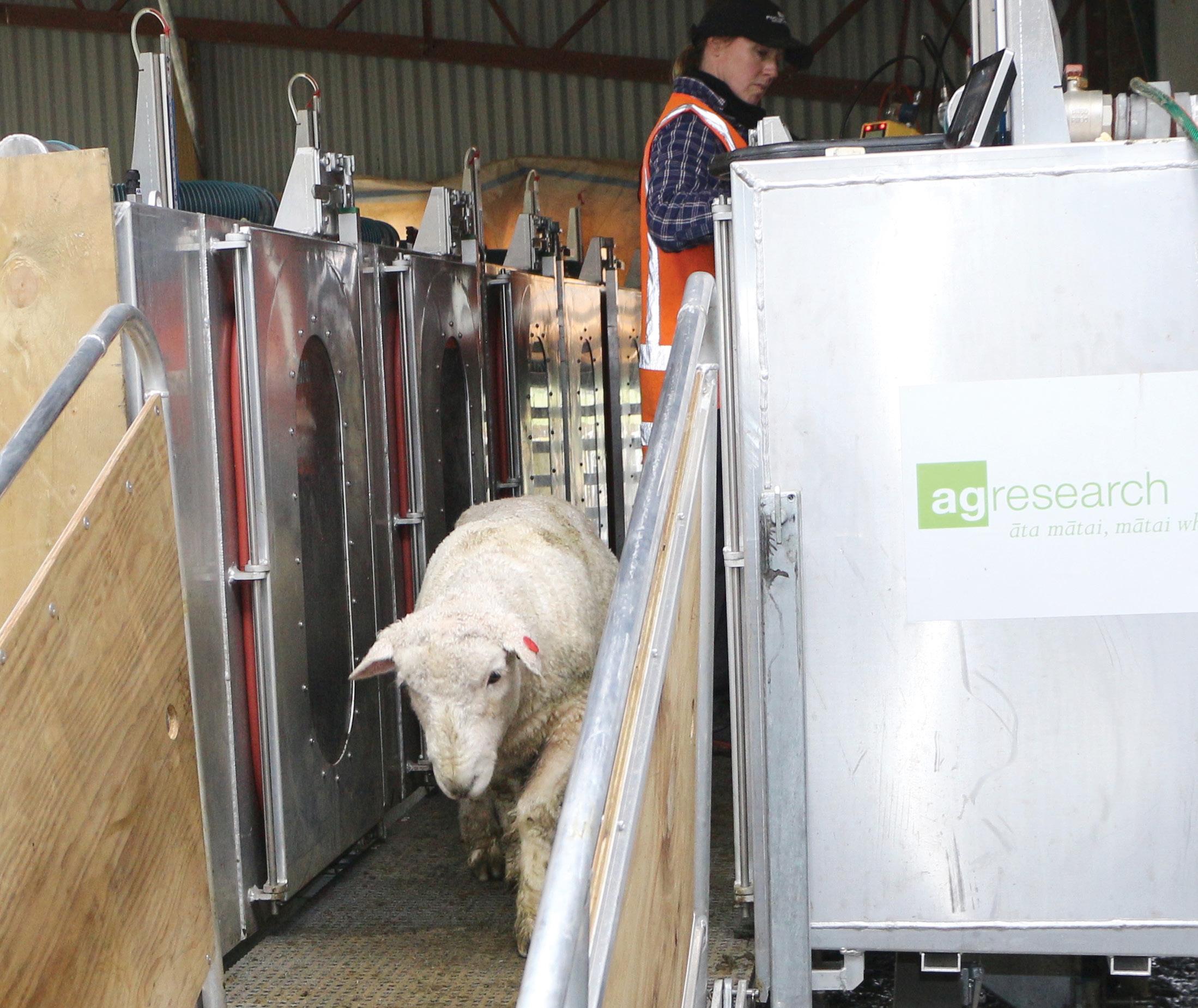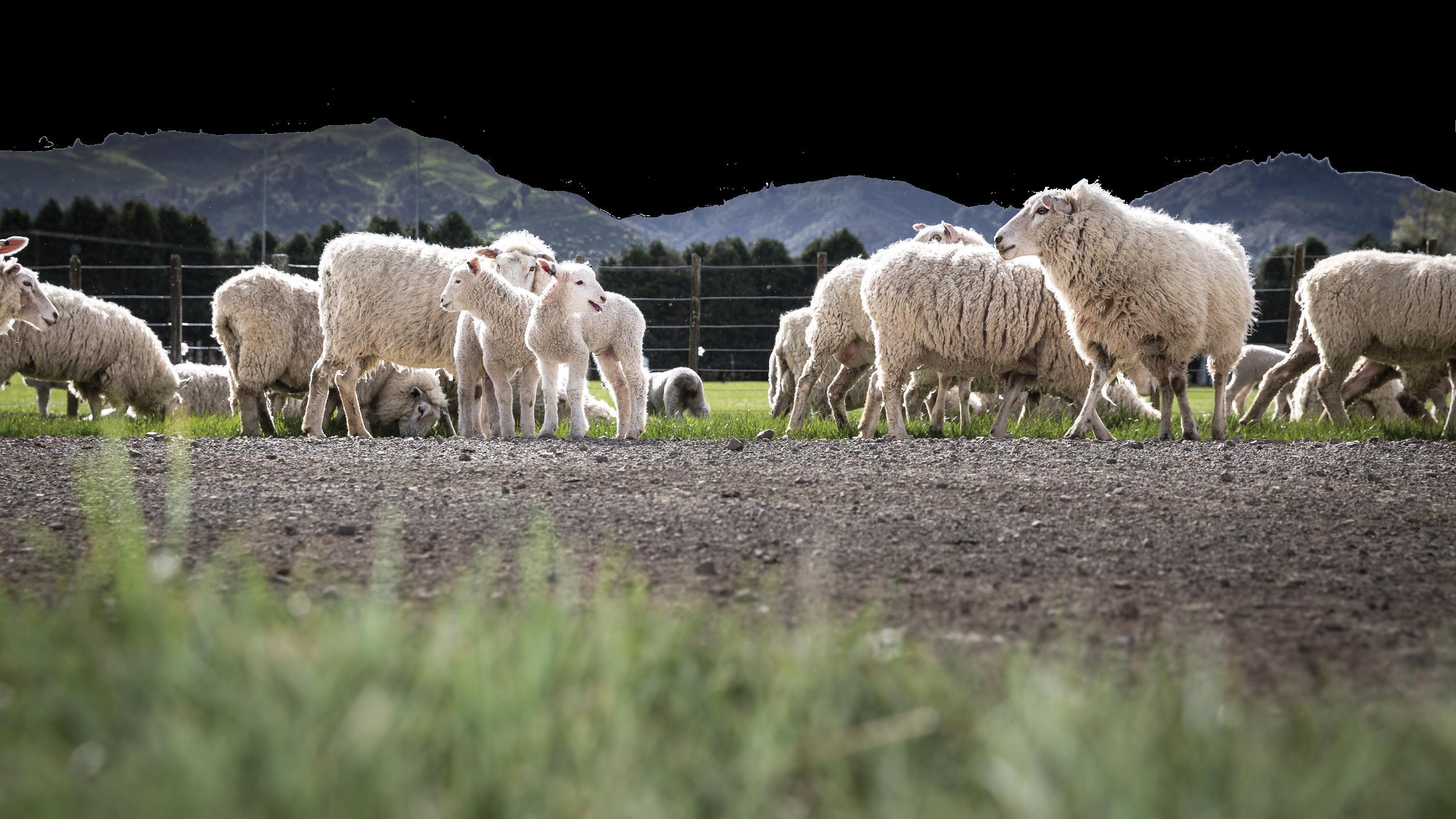
8 minute read
Breeding low-methane sheep
James Hoban reports on development of sheep with lower methane emissions.
Low methane-emitting sheep are a reality. After more than 10 years measuring methane emissions and selecting for lower-emitting sheep, AgResearch is now able to measure individual animals onfarm.
Suzanne Rowe and her colleagues have shown methane emission is heritable, can be measured and breeders can select for it.
Work started with progeny test flocks going through respiration chambers 10 years ago. After three years of this, scientists got to the point of having a high-methane flock and a low-methane flock. They have continued from that base for several generations.
The AgResearch flock is annually lowering methane emissions by 2-3%, though Rowe expects wider industry change to be about 1% each year if the breeding approach is adopted. Because it is cumulative, this offers a significant opportunity to lower emissions.
It appears inevitable that farmers will have to account for greenhouse gas emissions at some level. Onfarm reductions will be needed for New Zealand to meet targets the Government has committed to. Enteric methane is the gas produced by ruminants as they digest feed.
Reductions in methane are firmly in the Government and Climate Change Commission’s sights. It accounts for 35.2% of NZ’s total greenhouse gas emissions and 73.1% of our agricultural emissions. Of that methane emission, dairy cattle are responsible for 48.4%, beef cattle 20.3% and sheep 29.4%.
Rowe explains that despite climate change research being a focus for the Government, this picture does not bode well for sheep research.
“It’s hard to get research money for sheep now because dairy cattle are the problem. Beef cattle are at 20% so if you sum those together most of the research now is in cattle.”
The commission has accepted methane is a complicated gas in that its reduction will have implications beyond financial. It is a short-term biogenic gas and lowering emissions has potential to turn farming and communities upside down. In their targets, the commission has granted methane



GLENGARRY POLL DORSET
Why you should buy a Glengarry ram: • 41 years performance recording • Major emphasis on growth, survival GLENGARRY POLL DORSET 51ST ANNUAL SALE Monday, December 4th, 2017 – 1pm Feilding Saleyards, Manchester Street, Feilding 130 Rams up for Auction Why you should buy a Glengarry ram: • 41 years performance recording • Major emphasis on growth, survival and muscling GLENGARRY POLL DORSET 51ST ANNUAL SALE Monday, December 4th, 2017 – 1pm Feilding Saleyards, Manchester Street, Feilding 130 Rams up for Auction Why you should buy a Glengarry ram: • 41 years performance recording GLENGARRY POLL DORSET 51ST ANNUAL SALE Monday, December 4th, 2017 – 1pm Feilding Saleyards, Manchester Street, Feilding 130 Rams up for Auction 55th ANNUAL SALE December 6th 2021 - 1pm • 45 years performance recording • Major emphasis on growth, Why you should buy a Glengarry ram: • 41 years performance recording • Major emphasis on growth, survival and muscling 51ST ANNUAL SALE Monday, December 4th, 2017 – 1pm Feilding Saleyards, Manchester Street, Feilding 130 Rams up for Auction and muscling• All sires DNA tested for footrot and • Major emphasis on growth, survival survival and muscling• All sires DNA tested for footrot and • • All sires DNA tested for footrot and muscling genes and muscling All sires DNA tested for footrot muscling genes muscling genes • No. 1 ranked Terminal Sire 2004, 2005, 2009, 2010 & 2017 (SIL ACE list) • 550 stud ewes means only the best rams are sold • Four Rams in Top 10 2017 SIL • No. 1 ranked Terminal Sire 2004, 2005, 2009, 2010 & 2017 (SIL ACE list) • 550 stud ewes means only the best rams are sold • Four Rams in Top 10 2017 SIL Terminal Growth • All sires DNA tested for footrot and muscling genes • No. 1 ranked Terminal Sire 2004, 2005, 2009, 2010 & 2017 (SIL ACE list) • 550 stud ewes means only the best rams are sold and muscling genes • No. 1 ranked Terminal Sire 2004, 2005, 2009, 2010 & 2017 (SILACE list) • 550 stud ewes means only the best rams are sold • Four Rams Top 20, 2021 • No. 1 ranked Terminal Sire 2004, 2005, 2009, 2010 & 2017 (SIL ACE list) • 550 stud ewes means only the best rams are sold • Four Rams in Top 10 2017 SIL Terminal Growth • Finalist in two categories at 2017 • Finalist in two categories at 2017 Sheep Industry awards. • Four Rams in Top 10 2017 SIL Terminal Growth SIL Terminal Lamb Growth • 1st Ranked Ram 2020/21 SIL Terminal Growth • Finalist in two categories at 2017 • Sheep Industry awards. Finalist in two categories at 2017 Terminal Sire Lamb Growth Sheep Industry awards.
For ram and semen enquiries contact Ross & Ben Pratt today: Sheep Industry awards. For ram and semen enquiries contact Ross & Ben Pratt today: Ross 06 323 3827 • RD 5, Feilding Ben 027 2356 577 • RD 2, Kimbolton • benpratt@xtra.co.nz Ross 06 323 3827 • RD 5, Feilding Ben 027 2356 577 • RD 2, Kimbolton • benpratt@xtra.co.nz For ram and semen enquiries contact Ross & Ben Pratt today: Ross 06 323 3827 • RD 5, Feilding For ram and semen enquiries contact Ross & Ben Pratt today: Ross 06 323 3827 • RD 5, Feilding Ben 027 2356 577 • RD 2, Kimbolton • benpratt@xtra.co.nz Ben 027 2356 577 • RD 2, Kimbolton • benpratt@xtra.co.nz

Callum Stewart 0272 802 688 Callum Stewart 0272 802 688 Maurice Stewart 0272 469 255 Maurice Stewart 0272 469 255 Caitlin Rokela 0274 056 156 Caitlin Rokela 0274 056 156 Callum Stewart 0272 802 688 Callum Stewart 0272 802 688 Maurice Stewart 0272 469 255 Callum Stewart 027 280 2688 Maurice Stewart 0272 469 255 Caitlin Rokela 0274 056 156 Maurice Stewart 027 246 9255 Caitlin Rokela 0274 056 156
Ryan Shannon 027 565 0979
LK0090366©LK0090366© LK0090366© LK0090366©
emitters a flexi-target of reducing emissions by 24-47% by 2050. This builds on a target of a 10% reduction in methane emissions by 2030.
One of the commission’s recommendations is that a pricing mechanism to incentivise farm emission reductions by 2022 should be implemented.
Farmers holding on to hope that there is an emission reduction toolbox on the way, that will offer meaningful solutions without major system changes, can be heartened that the methane breeding approach has made it to this point.
Mooted vaccines are possible but will take a long time and major expense to develop. Gene editing does not appear feasible, even if the public accepted it. Rowe says, methane emission is not a single gene trait or even a multi-gene trait. Rather it is polygenic.
With more than 10,000 animals measured now, Rowe is confident in the heritability and potential of selecting for low methane. The trait has heritability of 0.2-0.25. Initially, tested animals were part of feed conversion efficiency trials and were fed lucerne pellets. Once the difference in methane emissions was quantified, it was an important next step to check whether the results on lucerne pellets would be replicable on a grass diet. This has since been verified and Rowe cites that as a key breakthrough.
Another breakthrough came when it was discovered that one-hour measurements in portable accumulation chambers were adequate to generate accurate breeding values. Until that point, all measurements were being taken in respiration chambers, which were not portable. This was a much slower process and not particularly accessible for breeders.
Despite ongoing controversy about accounting for methane emissions, it seems inevitable that it is something Kiwi farmers will have to allow for. With the first goals focusing on “knowing our numbers” some farmers and scientists have turned their attention from simply quantifying farmlevel greenhouse gas emissions to working out what tools offer the greatest potential in driving reductions.
Breeding for lower methane emissions is one of those tools and while Rowe and others expect relatively modest reductions, they do see it as a viable option for incremental gains for sheep farmers.
Implications for sheep type
Anyone wanting to go down the path of selecting or using lower-methane sheep will want to know what the impact of this direction might be on other traits. Rowe’s work shows low-methane animals emit 11% less methane per kg of feed eaten. They are smaller animals and have a smaller rumen but with the same surface area (their rumen papillae are denser and longer). They achieve more lean growth and less fat and also grow more wool. In general she says they are healthy, productive sheep.
Breeders hoping for a competitive advantage for any particular breed will be disappointed. Rowe says there is no major difference to date. Of the animals measured, nearly a third are Romneys and two thirds are composites. Next to no fine-wool sheep have been measured so far. Two thirds of sheep measured have been in the South Island.
Breeders wanting to measure sheep onfarm need to commit to at least 120 animals (84 per day). Rowe says it is not worth the time it takes to travel and set up the portable accumulation chamber trailer for less animals.
With only one trailer in operation and growing demand, travel logistics are challenging. At $30/animal for direct measurement plus a further $25-30 per animal for genotyping the 120-animal minimum is undoubtedly a stumbling block for smaller flocks and breeders.
Mixing the direct measurements with genotyping results in a genomic breeding value for sires. Rowe recommends measuring 15 animals/sire. In the three weeks prior to measuring, animals need to be well fed with no major events like shearing or drenching.
Lower-methane sheep have negative breeding values so ranking of animals for methane goes from low to high. The breeding values generated do not account for animal size or feed intake and at this stage are not included in indices.

A technician works in the portable accumulation chamber trailer.












